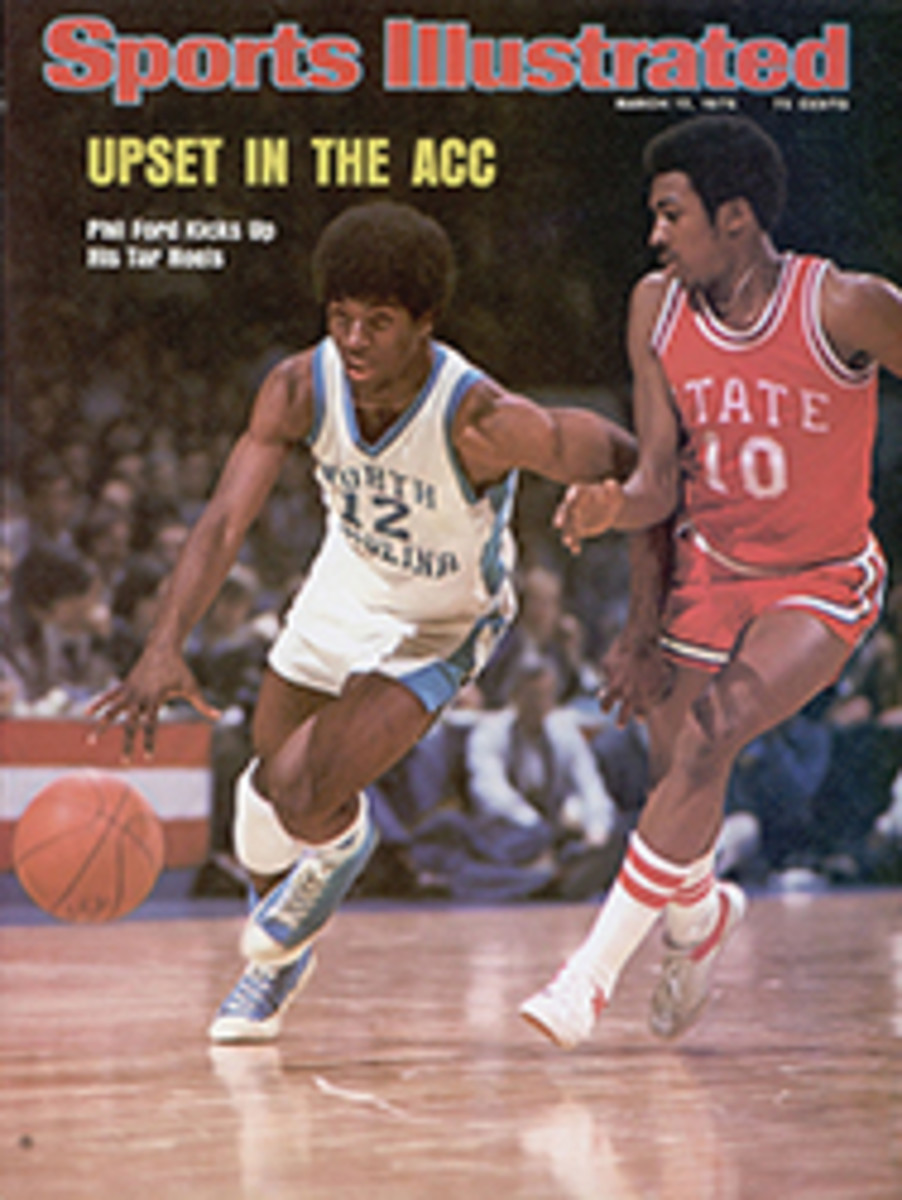
TRUSSED LIKE A TURKEY, THE PROFESSOR SWAM FOR PALTRY PRIZE AND FLEET FAME
The Evel Knievels of this world seem to surface at regular intervals, regardless of the prevailing levels of technology and sophistication. All that is needed are a hardy, enterprising spirit and a genial press eager to report deeds of derring-do. Sometimes daredevils allege scientific or altruistic motives for their stunts—to determine the maximum altitude or depth at which man can survive or to test a new safety device—but just as often the feat has no practical value other than lining a few pockets.
Into the second category fall the aquatic accomplishments of "Professor" Marquis Bibbero, at least until a significant portion of the human race takes up swimming with its arms and legs bound. Then Bibbero undoubtedly will be hailed as the person who first proved it could be done.
His brief period of fame came during the spring and summer of 1882, following a discussion between Richard K. Fox, publisher of the National Police Gazette, and a Mr. Washington La Brie about whether a swimmer could negotiate New York's East River with his feet bound at the ankles and his arms tied behind his back. Fox wagered $250 that Bibbero, one of the strongest swimmers of the day, could perform the feat if he were given three tries.
Bibbero's first attempt on Wednesday, May 31, 1882 began in the saloon of William McCoy near the Fulton Ferry dock at South Street. While others drank champagne, Bibbero prepared himself for the swim by smearing his body with a mixture of porpoise oil and lard. "He explained that this delightful mixture would enable his body to retain its heat and prevent the sharks from biting him," wrote The New York Times.
Just before one o'clock, Bibbero hopped aboard a small boat with Fox, several well-known sporting gentlemen of the time and a fellow daredevil named Robert Donaldson, who would follow him at a close distance. (Donaldson's specialty was jumping from high places and he had his eye on the Brooklyn Bridge.) As the boat pushed away from the pier, a cry of encouragement went up from the crowded docks and riggings of nearby vessels that were thick with spectators. When Bibbero "divested himself of his coat and pantaloons" a moment later, it could be seen that he was dressed in colorful tights and that his hands were bound with cords.
Once in the water, Bibbero began to propel himself, as one reporter described it, "like a porpoise, with his knees." Making good headway despite his handicap, he soon had reached the middle of the river, where a strong current began sweeping him quickly southward toward Governor's Island. As he neared the Battery after being in the water nearly an hour, Bibbero gave up and signaled for help. Donaldson promptly leaped into the river and cut the professor's bonds. Phase One of the operation was a failure, except when it came to attracting spectators. "During the time he was in the water, the crowds on both sides of the river continued to increase, but few seemed to know, however, that a man-fish was swimming for a wager. It was generally supposed that a convict had escaped from Blackwell's Island," the Times reported.
Three weeks later Bibbero was at it again, this time in a rainstorm. Despite the weather, he was dressed to kill, emerging from McCoy's in a pair of alligator shoes and an overcoat that hid a tightly knit shirt and a pair of blue trunks. Accompanied by Patsy Owens, who was described as the ichthyologist and shark catcher of Peck Slip, and Donaldson, Bibbero reversed his previous procedure by swimming from Brooklyn toward New York. After smearing himself, this time with goose grease and turpentine, and after being transported by a small boat to Brooklyn, he leaped overboard and slithered toward his objective, his feet moving, according to New York's the Sun, with the "motions of a dogfish's tail."
"The tide was going out with a fury that might have appalled any ordinary swimmer, and those who saw Bibbero when he appeared several yards ahead of the rowboat freely expressed the opinion that he was indeed a bold man," added the Times. "He wriggled like an eel and shot ahead with astonishing rapidity."
But for the second time, Bibbero fell victim to the tide, and he again signaled to Donaldson. Afterward Bibbero said that while sitting in his tights in the boat before entering the water, he had become chilled and thus lost much of his strength.
For his third and final attempt to prove his mettle and win some money for Fox, Bibbero waited until July 3, as public interest rose ever higher. The weather on that occasion was less a factor than before, but the clear skies brought a new threat—river traffic. After a dramatic dive into the water on the Brooklyn side, Bibbero was under way. "He disappeared for a moment and then rose to the surface and puffed from his mouth a stream of water such as a young whale might eject upon coming to the surface," the Times reported.
A quarter hour later, as Bibbero's powerful thrusts brought him abreast of the Roosevelt Street pier in New York, the hazard of ferryboat traffic suddenly became apparent. "Passing steamers churned up the water and sent waves over Bibbero, but he apparently was not affected in the least by rough water. When the ferryboat Garden City came along, it was alternately head and heels up with Bibbero, but he once more got his bearings and continued on manfully for the shore," the Sun said.
After being in the water only 20 minutes, Bibbero was within 10 yards of the pier when Referee Charles Sherer became alarmed at the tangle of river craft and ordered the professor pulled aboard. At first this action generated a controversy over whether Bibbero had fulfilled his obligation, but La Brie graciously conceded the contest and paid his bet to Fox. Saloon owner McCoy, having picked up $1,800 in side bets, gave Bibbero $100 for his trouble.
For several years afterward, strong swimmers felt compelled to prove their ability by performing in the constricted manner first mastered by Bibbero. On July 27, 1885, Dennis F. Butler, a swimming teacher at the Battery Bath, duplicated the feat on the East River despite harassment by conscientious police officers and near-envelopment by water traffic. Three years later a Maltese sailor named Jack Williams, trussed hand and foot, managed to swim 25 miles down the Mississippi from Alton, Ill. to St. Louis. That seemed to put an end to swimming the hard way. After Williams' monumental effort, it hardly seemed like fun anymore.

